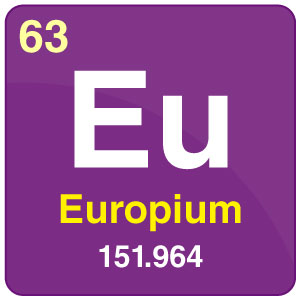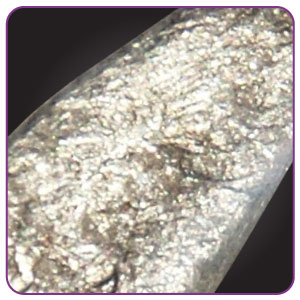Europium

| Symbol | Eu |
| Atomic Number | 63 |
| Atomic Mass | 151.964 amu |
| Discovered by | Eugène-Anatole Demarçay in 1901 |

Chemical Properties of Europium
| Group | Lanthanides | Melting point | 822°C, 1512°F, 1095 K |
| Period | 6 | Boiling point | 1529°C, 2784°F, 1802 K |
| Block | f | Density (g cm−3) | 5.24 |
| Atomic number | 63 | Relative atomic mass | 151.964 |
| State at 20°C | Solid | Key isotopes | 153Eu |
| Electron configuration | [Xe] 4f76s2 | CAS number | 7440-53-1 |
| ChemSpider ID | 22417 | ChemSpider is a free chemical structure database | |
What is Europium?
- Europium is not found freely in nature. Most of the minerals comprise europium with the vital sources being monazite and bastnasite.
- It is a soft white-silvery metal. The enrichment or depletion of europium in minerals related to other rare earth elements is termed as europium anomaly.
Uses of Europium
- It is used as control rods in nuclear reactors due to its effectiveness in absorbing neutrons.
- Europium oxide has its application as a phosphor activator.
- Europium-doped plastics are used as laser materials and for making thin superconducting alloys.
- It is used in the euro currency as an anti-forgery measure.
Properties of Europium
- Europium is a member of the lanthanides group of elements. It is the most active element among the lanthanides.
- It reacts very quickly with water and gives off hydrogen. It reacts strongly with oxygen in the air and spontaneously catches fire.
- There are two stable isotopes of Europium that exist in nature, europium-151 and europium-153.

Comments